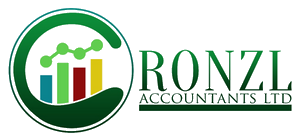Payment on account is a system that is used by the revenue to ensure that taxpayers under Self-assessment pay towards tax and national insurance for the next tax year.
The amount of payment on account applied for the taxpayers is based on previous tax years due to the HMRC.

Illustration of payment on Account.
Jane is a hairstylist and started trading on the 6th of April 2018. She registers herself for self-assessment as a sole trader. Her tax and national insurance due to HMRC is £1000. The HMRC would add £500 on top of the tax that she is due to pay on the 31st of January 2019. The HRMC also expects Jane to pay £500 to them by the 31st of July 2019.
This £500 addition is based on the assumption that Jane would owe HMRC the same amount next tax year 2019/20.
This amount would be adjusted annually when the returns are submitted.

Is it possible to be under Self-assessment and not make a payment on account?
There are some taxpayers that are exempted from making payments on account.
These are taxpayers that are employed and pay tax through PAYE.
The condition for this is that at least 80% of tax is deducted through PAYE.
The main reason for this exemption is that their tax codes are usually adjusted to reflect their income through self-assessment.
Illustration 2 on Payment on Account
Alwyn is an Architect, she works for Bandit Industry limited. She earns £50,000 a year.
She also advises clients in her spare time, mainly on the weekend. Therefore, she receives some payments from Self-employment.
She has registered for self-assessment to declare the £10,000 she has received from her freelancing activities.
The tax Alwen would have paid through PAYE in 2018/19 is £7630 as shown below, which is more than 80% of the combined tax due shown.
Income from Bandit Industry £50,000
Income from Freelancing £10,000
Total Income £60,000
Less Personal allowance of £11,850
Total taxable Income £48,150
Tax at 20% £34500 * 20% £6,900
Tax at 40 % £13,650 *40% £5,460
Total due £12,360
Tax already paid £8360
Net due £4000

Conclusion on payment on account.
What about if I am earning less tax in the current tax year?
A taxpayer can inform HMRC if they would like to reduce their payment on account.
This can be done whilst submitting their returns and calling HMRC afterwards.
HMRC would adjust the payment to reflect the income stated by the taxpayer.
Payment on accounts is like treated by the revenue as paying for the tax that would be owing to the m in the current tax year.
This will be accurate as it’s based on previous years’ self-assessment returns, therefore submitting your tax returns very early in the year will help to reduce the risk of paying too much tax month or not paying enough tax in the tax year.
Payment on account is also used in collecting tax from shareholders that receive dividends in the tax year or landlords that receive a rental income.
taxpayers are allowed to submit tax returns soon as the tax year ends that’s why individuals that have this other income will be at advantage by submitting their returns early enough.
If individuals want to check on their payment on accounts or make changes to the amount due, they can contact HMRC or sign in to their government gateway accounts, However, if this is not accurate, interest would be added to the payment due.
If you would like to book a free consultation, kindly click on this link for free 30 minutes consultation
